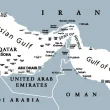Daily new COVID-19 cases in Malaysia started to skyrocket in October 2020 following the election in Sabah, resulting in the third wave of pandemic. Hundreds of new cases confirmed each day set alarm bells ringing. The wave posed a great challenge to the country to contain the virus due to its rapid spread throughout the country.
As of July 6, 2021, there were 792,693 cases confirmed in Malaysia. Malaysia refused to take a leaf out of New Zealand’s book and learnt how the country contained the pandemic. Due to the marked increase in COVID-19 cases, the country had to impose another movement control order (MCO) to contain the spread and save the health sector which almost collapsed.
Hence the MCO was placed again on June 1, 2021 with some leeway given to a few sectors. As a result, the other sectors were plunged back into adversity to survive. The vulnerable labor market became uncertain again. Many people expressed their worries about their jobs, especially in the private sector.
The MCO had a great repercussion for the local economy. Many people had no choice but to draw in their horns or tighten their belts. Their ordeal of putting food on the table sinking like a stone prompted them to raise white flags. They did so to express that they had no money to feed their families and were in dire need of help.
However, the last resort came under fire from a few politicians who were not in their shoes. Raising the white flags were misconstrued as losers. It was more heart-wrenching when some people committed suicide due to unemployment. Many people were living under stress. Based on the MCO in 2020, Malaysia reported an increase in violence against children and women. This issue should have been taken into account before the second MCO went into place.
The government continued to impose the MCO on the whole country without weighing up all the inevitable consequences. Many businesses were not able to maintain their position in the market. Istana Hotel in Kuala Lumpur announced to cease operation effective on September 1, 2021. The tourism industry was the most affected due to the ban on interstate travel and foreign tourists.
Many people went berserk when the long MCO went down the drain as the number of new cases remained inexorable. The emergence of a new cluster from factories was the final straw. The people were ordered to stay at home to break the transmission while some factories were still in operation, creating more new clusters.
There seemed to be no light at the end of the tunnel. Allowing some factories to be open to cushion the impact of the MCO on the economy has stirred indignation when the number of daily cases remained above 6,000. Thus, the MCO failed to bring the pandemic to an end.
The first phase of the MCO has been extended until the number of new cases hits below 4,000. This suggests that more economic sectors still cannot be open. The impact of unemployment on the individuals is severe and should be given more serious attention. Even though giving financial aid to households in the B40 category is better than nothing, they are still struggling to skimp on food to keep pace with the high cost of living.
If we cast our minds back to the moment when the number of new cases started to climb, we can remember vividly how it happened. Fearing the economy would be tremendously harmed, the government delayed imposing the MCO. However, daily new COVID-19 cases sprang up like mushrooms, the government realised the importance of the MCO. However, the barn door was closed when the horse had bolted. There was no use crying over spilled milk. All of the people needed to carry the can.
The order to stay at home should be reviewed as it was not the main factor that contributed to the large number of new cases. A stricter lockdown should be placed on the areas that recorded a large number of new cases, such as Selangor. All of the factories in those areas should stop their operation. Otherwise, the MCO will remain in vain and culminate in many more problems.
The second phase of the national recovery plan seems to be irrelevant in a few states, especially in Perlis. This is because many economic sectors remain closed even though the number of active cases stands low. The government may consider opening up all economic sectors in those states, but the standard operating procedures (SOPs) must be strictly followed.
*Mohd Shahidan Shaari, a senior lecturer from Universiti Malaysia Perlis











